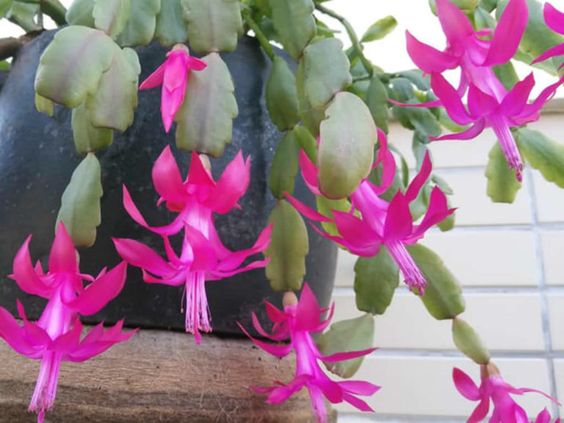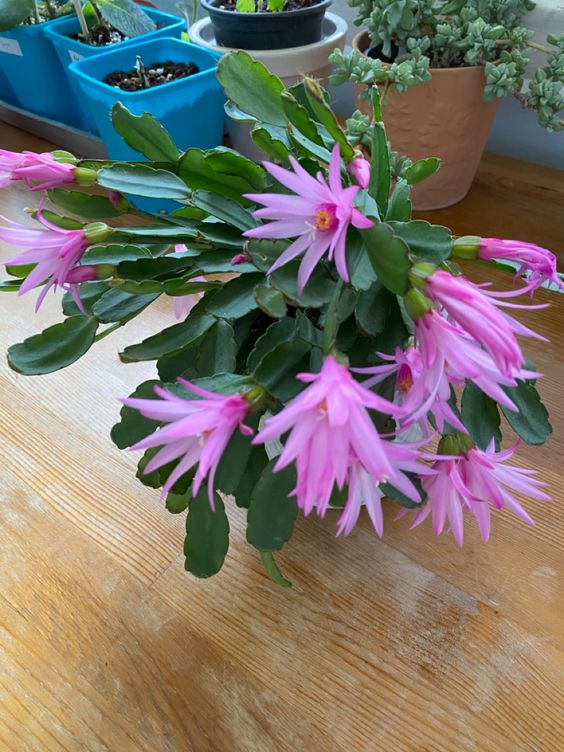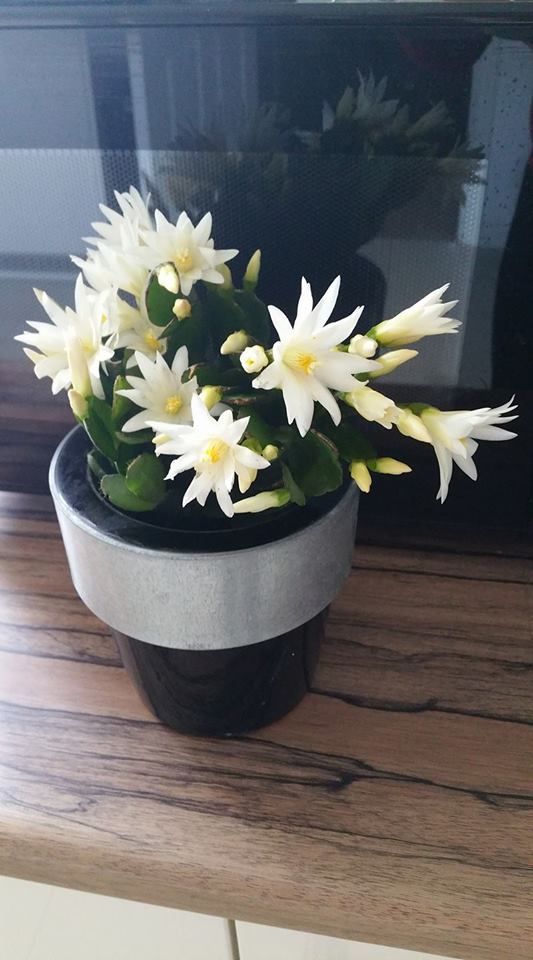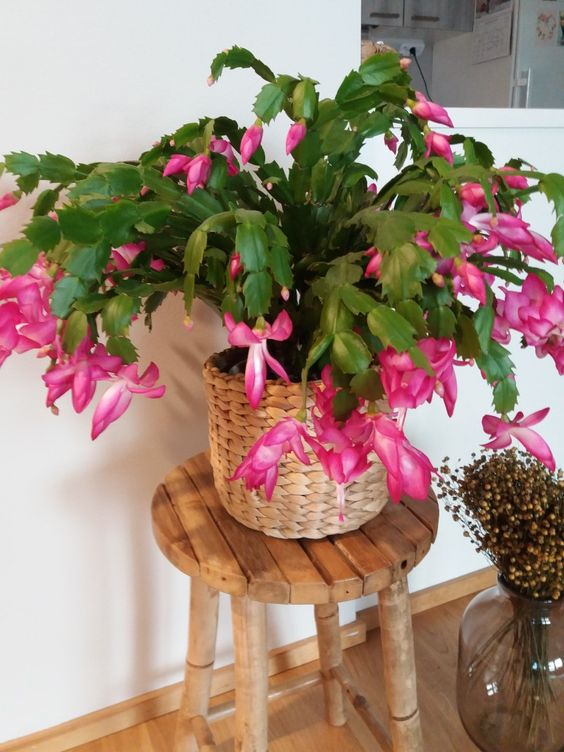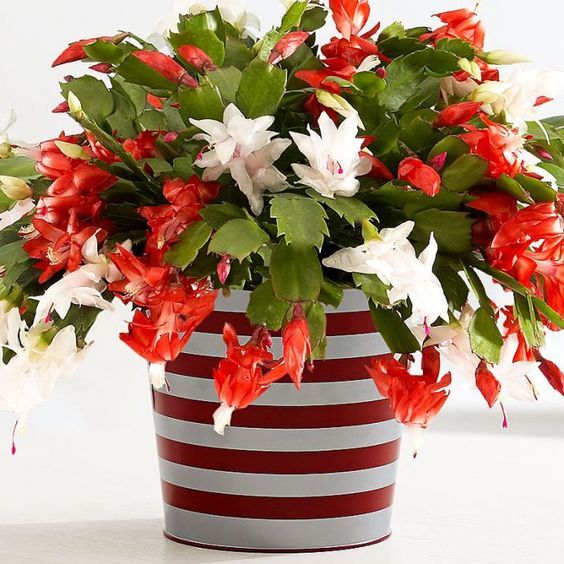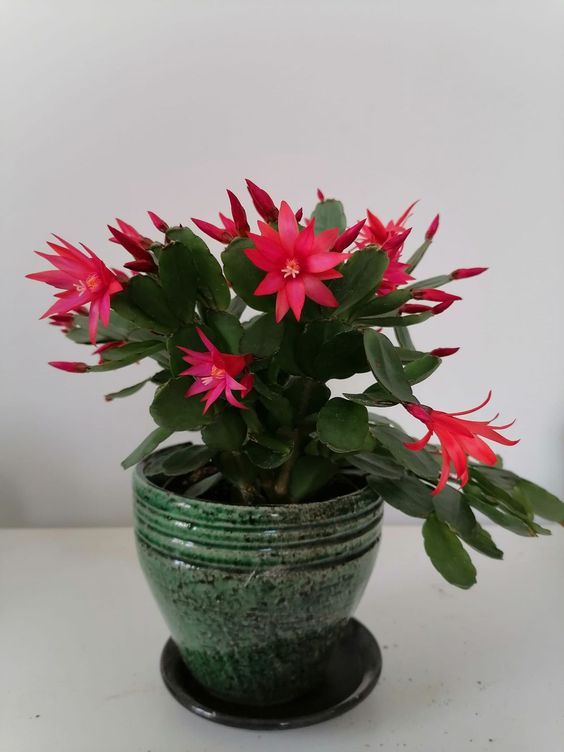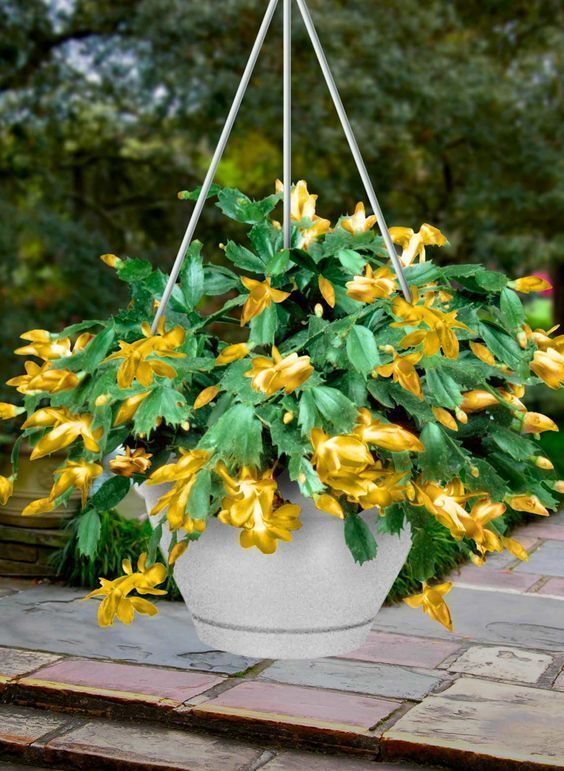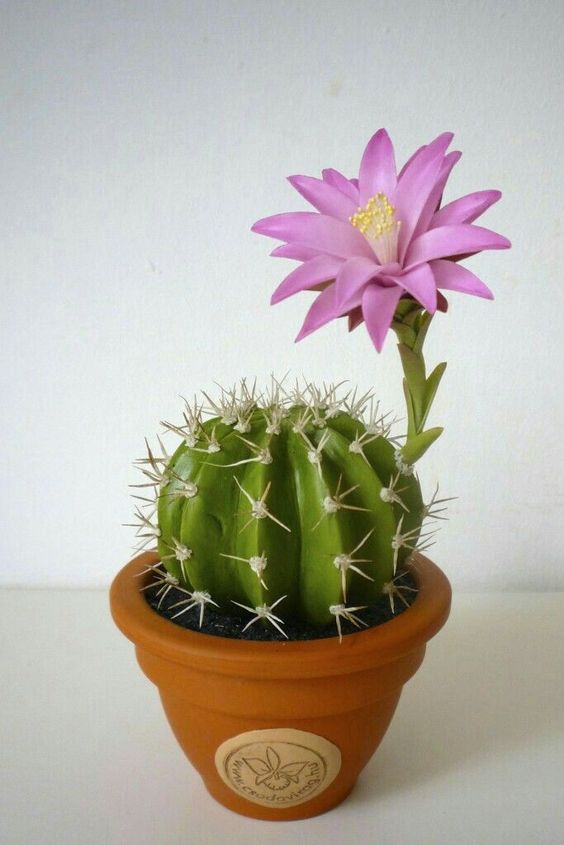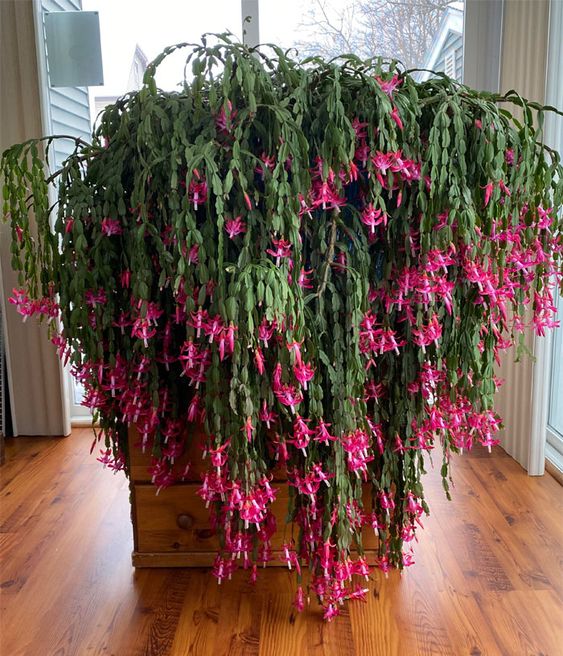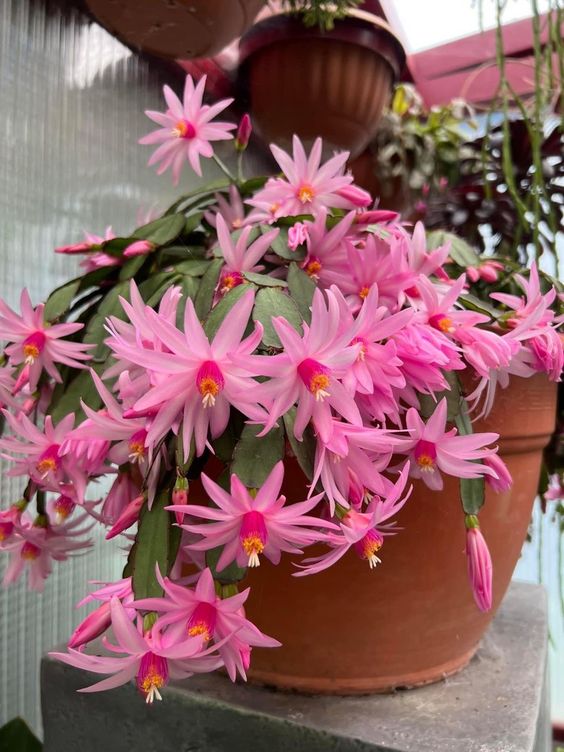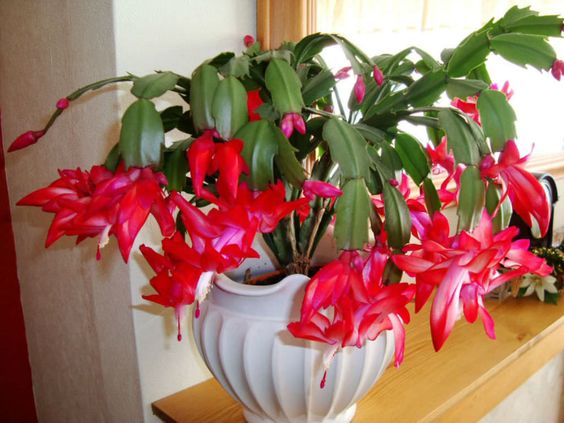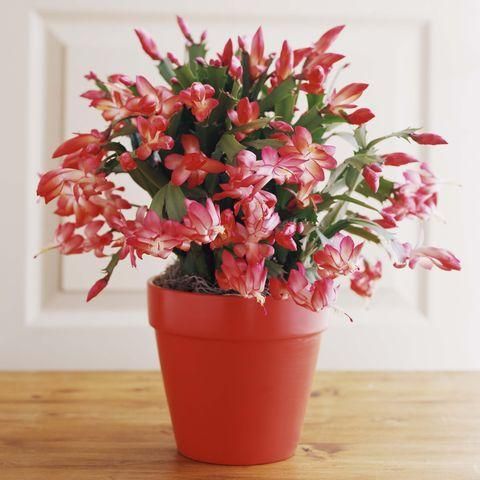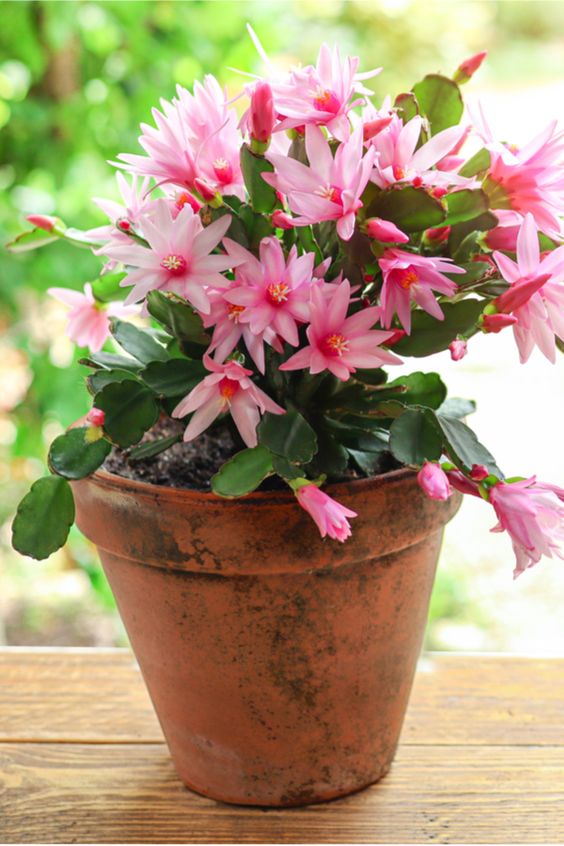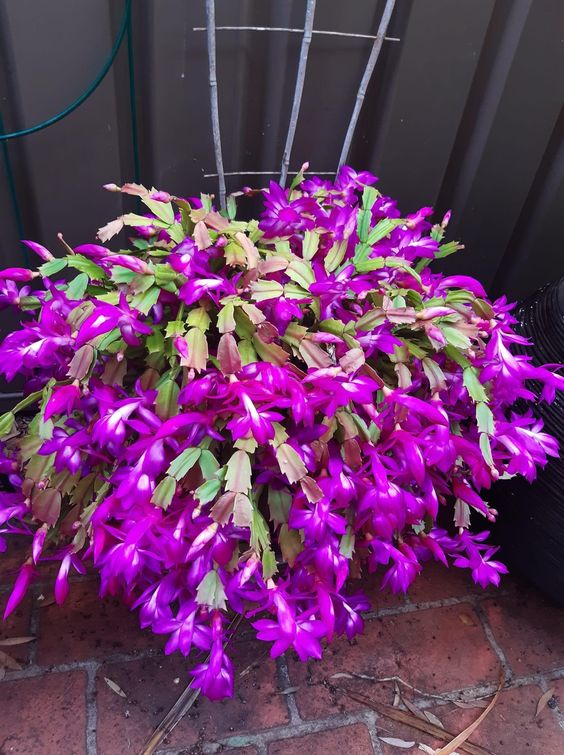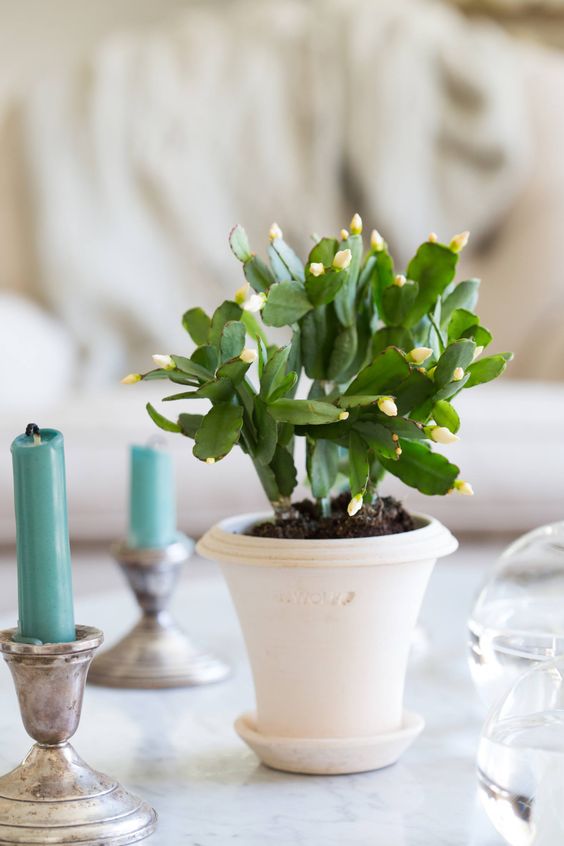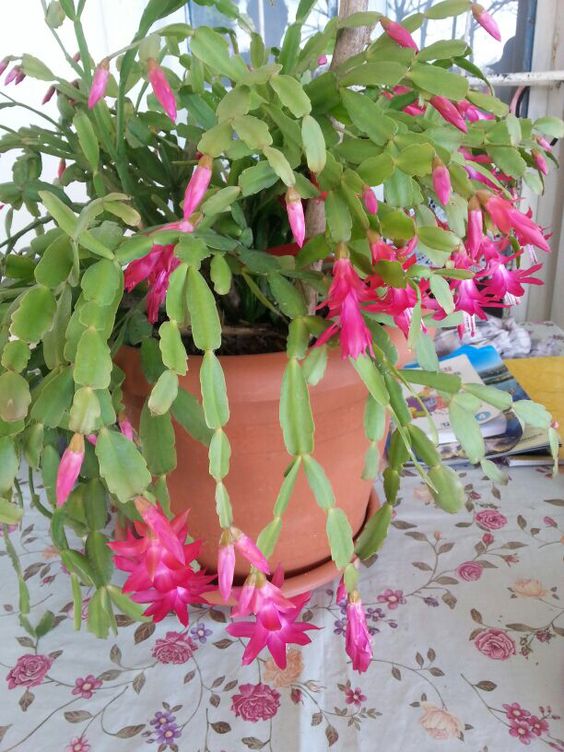Before delving into the details of the flowering of the Christmas cactus, it is necessary to understand the properties of this plant. Christmas cactus, also called Thanksgiving or holiday cactus. Although the Christmas cactus is classified as a “cactus,” it has very different care needs than its desert relatives. As a forest cactus, this plant thrives in more tropical conditions. They prefer bright, indirect light and richer, more organic potting soil. Their water requirements are also higher than other succulents. Therefore, do not leave the soil too dry.
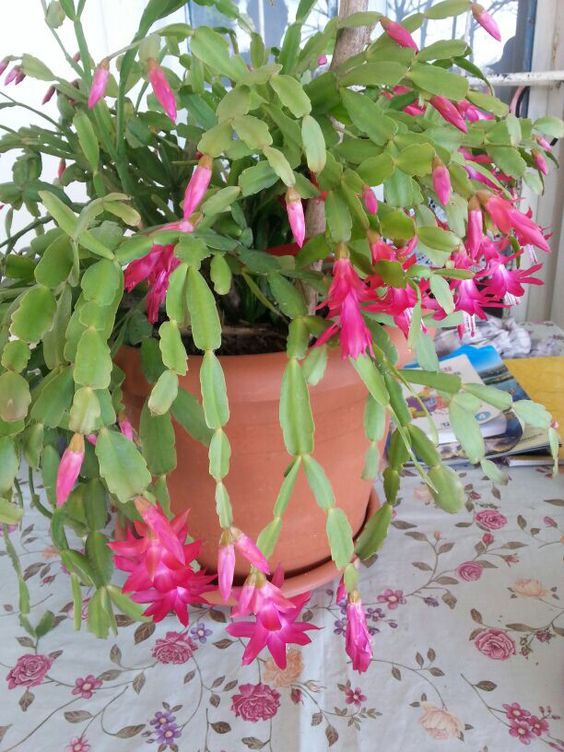
Their flowering period occurs in autumn, usually in the early days of November. The “trick” to getting them to bloom relies on three factors: minimal watering, light and temperature.
1. REDUCE WATERING
First, you need to limit the amount of water your plant receives, usually around October. Water only the top layer of soil, which is about an inch deep, and only water the plant when it feels dry. This watering schedule forces the plant to enter the dormant phase. Not to be forgotten: the rest period is crucial for the flowering of the Christmas cactus.
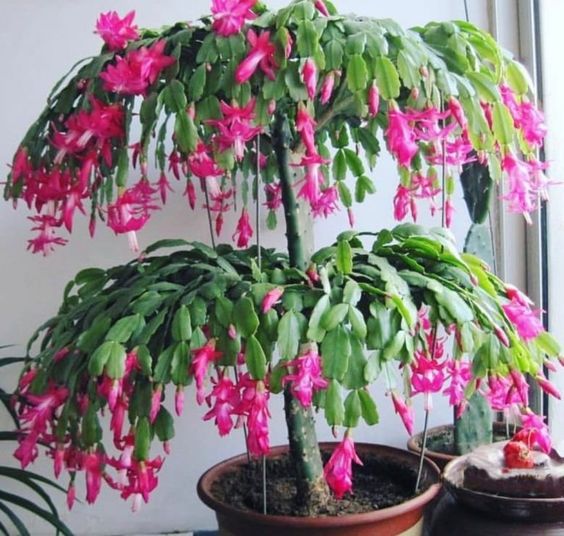
2. PROVIDE 12 HOURS OF DARKNESS AND COOLER TEMPERATURE
The Christmas cactus is known as a short-day plant, meaning it requires 12 to 24 hours of darkness each day, preferably in a cool room, to enter the flowering phase.
Place your Christmas cactus somewhere dark for at least 12 hours. You can also cover it with a piece of clothing around 6 p.m. and take it off the next morning. Continue this for about six weeks to encourage flower bud formation.
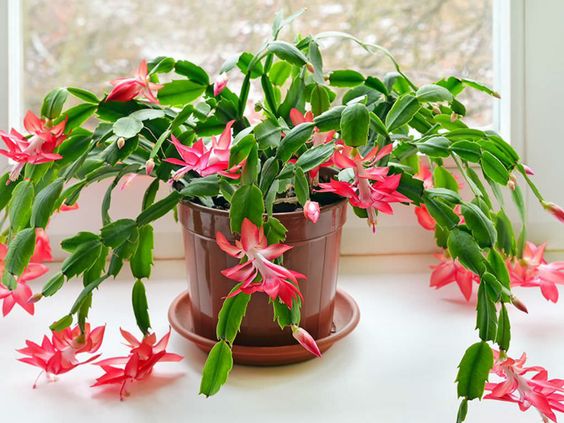
Remember that indirect bright sunlight is fine during the day, but it is important to ensure 12 hours of total darkness at night. Wherever you keep your Christmas cactus, do not turn on the lights at night, even for a short time. This breaks the required dark cycle and interrupts the flowering process.
The ideal temperature for blooming Christmas cacti is 50-55°F. Therefore, you may need to turn down the heat or find a cooler spot in the room.

Yes. Unlike many other succulents, the Christmas cactus can bloom again in the spring if it meets short-day conditions. Placing the Christmas cactus in an east-facing window that receives plenty of sunlight during the day and 12 hours of darkness each night can encourage the plant to bloom again.
Make sure your succulent receives a dark and cool treatment for at least six to eight weeks or until the buds emerge. If your Christmas cactus grows buds but then falls off, it could be due to drafts, high temperatures, too much sunlight or water.
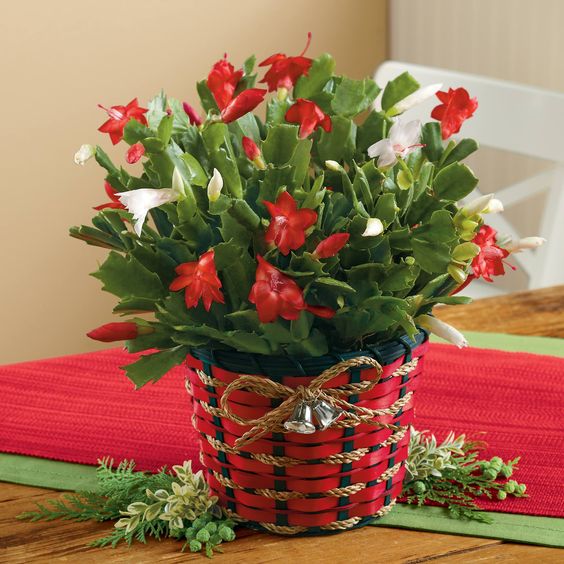
Once the buds appear, it takes up to twelve weeks for the flowers to fully grow. When the plant blooms, be sure to place it in a draft-free, sunny location. However, do not place it in a place exposed to direct sunlight. If it receives indirect bright sunlight, you will see more blooms. Increase watering as your Christmas cactus blooms. The amount depends on the temperature, lighting conditions and humidity.
Now that you’ve learned some useful tips for getting your Christmas cactus to bloom, there are a few important points to keep in mind when growing this incredibly beautiful plant.
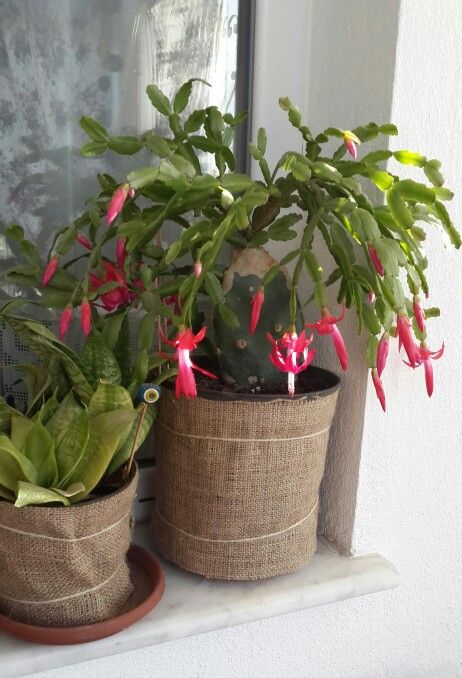
Christmas cacti bloom very profusely and produce flowers at the end of the leaves.
Each flower lasts five to seven days, while the plant’s flowering period lasts three to six weeks.
Continue to water your Christmas cactus lightly as it blooms. Lack of water causes the bud to break easily.
The Christmas cactus originally produces red flowers. However, the hybrids produce peach, lavender, magenta, white and pink flowers.
